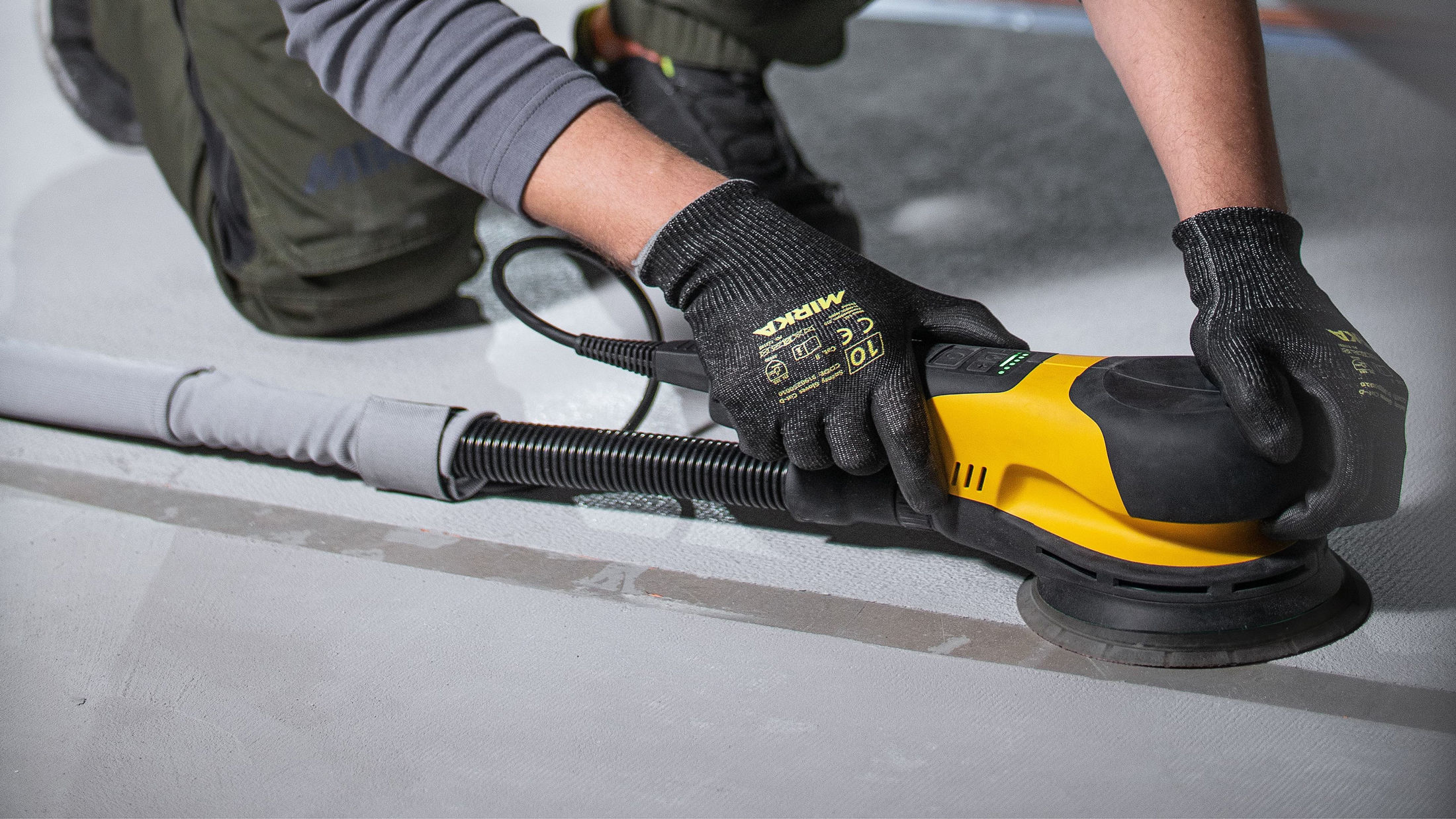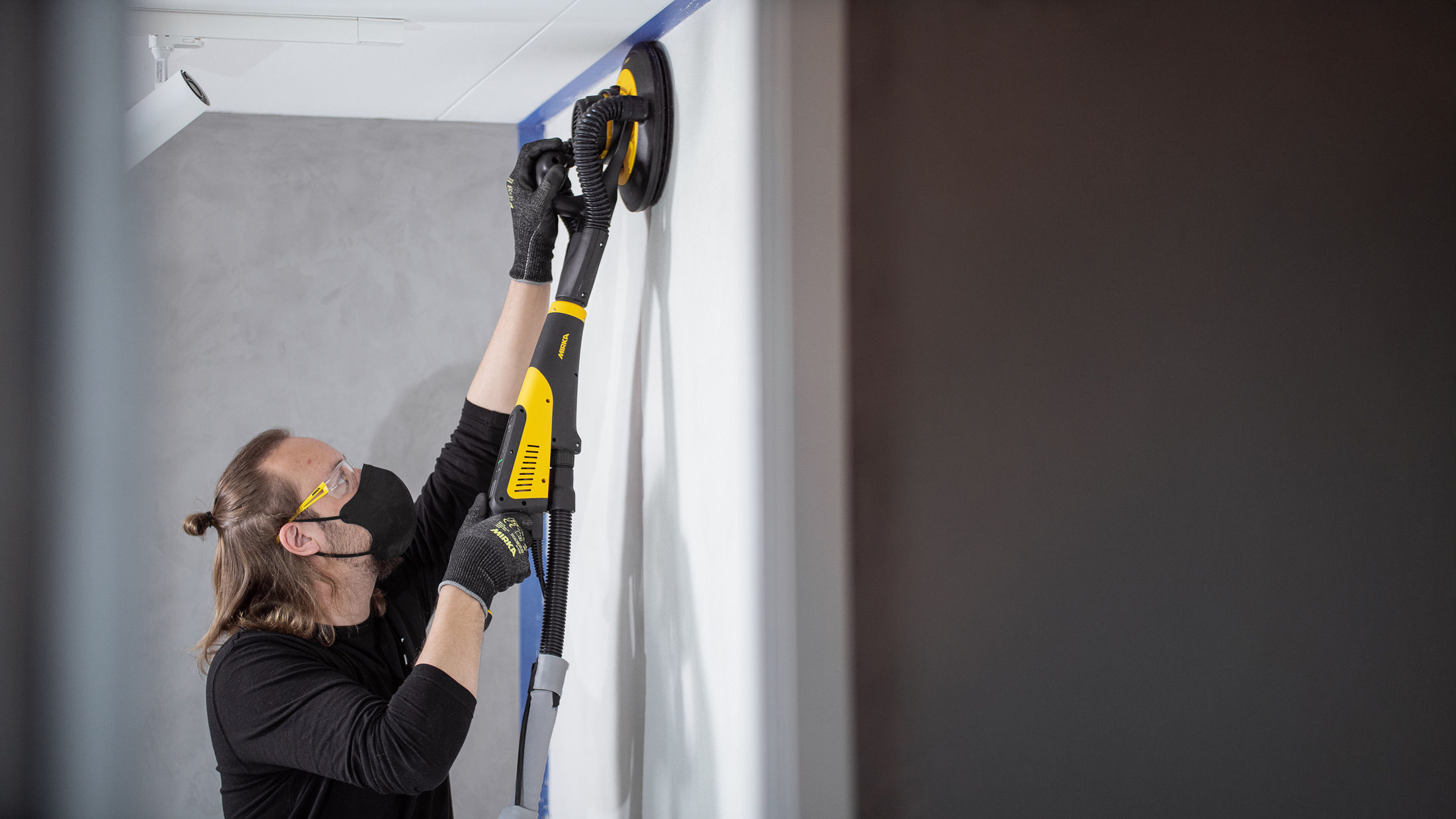2+1 years
Register Your Tool
All Mirka power tools have a standard two-year warranty. Get an additional 1 year of warranty free of charge by registering your tool within 30 days of purchase.
Keep your tools in excellent shape on myMirka where you can register, manage and order repair for your tools.
Replenish your stock, access marketing materials, view sales guides and read about upcoming product launches.
Always use the correct PPE when undertaking any sanding operation, please refer to the technical data sheets for all information.
There are many different brands of microcement. Always follow the manufacturer's instructions for your microcement. Next, we will go through the most common steps for applying microcement.
Roll or brush the primer onto the surface. While it's still wet, place the laminated mesh on top. Press it firmly into the primer to ensure full adhesion. Let it dry completely.
Apply a thin, even coat over the mesh and smooth it out. Let it dry.
The first two base coats of microcement are applied, allowed to dry and then lightly sanded with Abranet Ace HD P40–80 grit to remove the roughest irregularities.
Sand evenly but moderately with a DEROS RS. Too much sanding will negatively impact the adhesion of the following layer, and you will also risk exposing the laminated mesh.
The grain size, or 'granulometry', of microcement typically decreases with each successive layer. For instance, you can begin with an XL grain size for the first layer and then switch to L for the next layer.
The final coat (3rd or 4th) is the finest one, and can be sanded with Abranet Ace P120–180 grit.
For epoxy-based microcement, the final coat can be fine-sanded with Abranet Ace P240 grit and then Abralon P500–1000 grit. We recommend using a LEROS or LEROS-S for this task. Remember to dry sand if a glossy finish is desired.
The last coat is sealed with a lacquer to prevent grease (e.g., fingerprints) from sticking to the surface.
Redefining innovation in surface finishing
The award-winning Mirka® Power Tools have entered a new era. The lineup is now even stronger with advanced technology, improved performance, and user-focused design. Meet the stars of the new generation.
Mirka® DEROS II – The enhanced orbital sander series now features 8 upgraded models, delivering more power and even smoother sanding.
Mirka® DEOS II – Our refined low-profile orbital sanders, offering superior precision and control with 4 updated models.
Mirka® DEROS RS – The all-new heavy-duty rotary sander, engineered for maximum power and precision in tough applications.
Mirka® DEXOS – A state-of-the-art M-Class dust extractor, ensuring optimal performance and dust-free work environments.
Stay informed and inspired with exclusive updates
Discover surface finishing solutions, tips, and the industry trends – for professionals like you.


